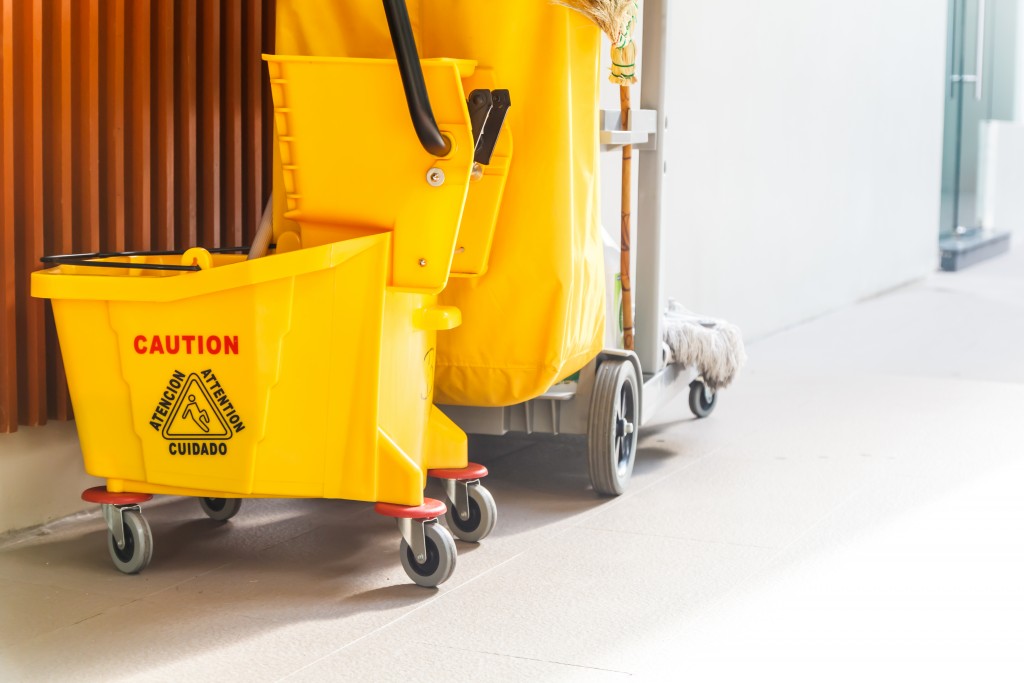It’s been half a year, and the COVID-19 pandemic is still a problem worldwide. And while Australia is flattening the curve, there are more than 20,000 cases in the country, and that number is still growing slowly. That means that you still need to continue social distancing practices in your factory, no matter what. One of the methods you should correctly do all the time is disinfecting and sanitising surfaces. Here are essential reasons you need to do it and the best practices in doing so.
How COVID-19 Is Spreading
According to the World Health Organization (WHO), COVID-19 can be transmitted through respiratory droplets. These droplets can easily be spread by sneezing, coughing, or just talking. And when a person inhales these droplets, they may end up contracting the virus. Infected people without symptoms can spread the disease to others.
The virus can also live on surfaces. According to researchers at the U.S.’s National Institute of Health (NIH), SARS-CoV-2, the cause of COVID-19 can be detected on plastic and steel surfaces for up to three days. A study from the New England Journal of Medicine found that it can survive on wood for up to four days, glass on five days, cardboard for one day, and copper surfaces for around four hours. These numbers all depend on sunlight, temperature, and your efforts to clean surfaces.
So how should you clean and disinfect your facility to ensure that the virus doesn’t have a chance to survive and spread?
Encourage Employee Handwashing
The virus can only come from either you or your employees. You encounter a lot of people and touch multiple surfaces on the way to work. Stock your bathrooms with a lot of hand soap, hand sanitiser, and paper towels. Make sure these have touch-less dispensers to minimise contamination.
Give your workers multiple breaks to ensure they can wash their hands a few times throughout their shift. Orient them with WHO’s handwashing procedure as well. If possible, post the guidelines on handwashing stations for easy reference.
Routine Cleaning and Disinfecting
Safe Work Australia stated that cleaning and disinfecting are two very different but equally important processes. The former involves removing germs and dirt from surfaces. Disinfecting is all about using chemicals like alcohol and bleach to kill germs and viruses.
Doing both for surfaces is the most effective way of getting rid of the virus, according to the agency. That is because cleaning helps remove organic matter that may interfere with the disinfectant’s ability to kill the virus.

Provide Proper PPEs to Cleaners
Your maintenance crew can use their standard washable cloths to clean surfaces. You should equip them with high-quality protective equipment like fresh masks, goggles, and gloves every day, so they can do their job while keeping themselves safe.
Use the Right Disinfectants
Regular detergent and water can clean surfaces pretty well. However, you may need a stronger disinfectant if you want to get rid of the virus confidently. For hard surfaces, it’s recommended to use at least 70% concentration alcohol. As for the bleach, use highly-concentrated ones that you have to dilute yourself. Use the manufacturer’s instructions when doing so and mix it in a well-ventilated area. These disinfectants are excellent at cleaning frequently-touched hard surfaces like railings or new shipments of control valves you just got from your supplier.
Guidelines for Cleaning
Here are some guidelines that health experts recommend when cleaning your facility’s surfaces:
- Clean from the cleanest to the dirtiest surface. Your maintenance crew should ideally start cleaning barely-touched surfaces first and then move on to busier ones like workstations, break room tables, doorknobs, railings, and more. That ensures that you remove the most germs and viruses as possible and that you’re not transferring them from a dirty surface to a clean one.
- Clean first, disinfect later. Use detergent and cloth to clean off soil and other dirt from the surface. Once it’s spick and span, use another cloth or a disposable paper towel to spread disinfectant throughout the surface. That ensures that the disinfectant doesn’t go through soil and dirt to kill the germs and viruses underneath.
- Let the disinfectant work its magic. The manufacturer may have instructions on how long you need to let the disinfectant stay on the surface before wiping it dry. If it doesn’t have any, ten to 15 minutes is just enough.
As someone in charge of a factory or manufacturing facility, it’s your responsibility to ensure that your workers are entirely safe from COVID-19 while they’re working. These procedures are recommended by health professionals both in Australia and across the globe. And while they may take some time to get used to, they’re essential to ensure your workforce stays healthy and productive throughout the pandemic and beyond.

